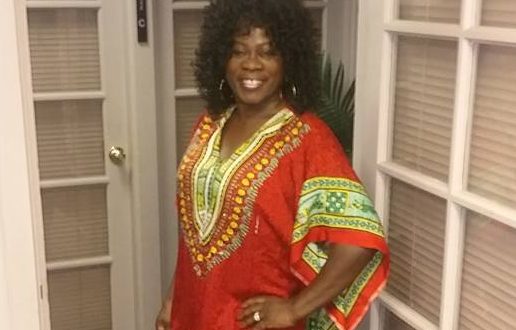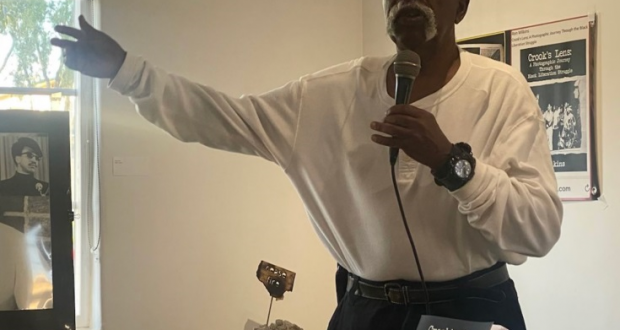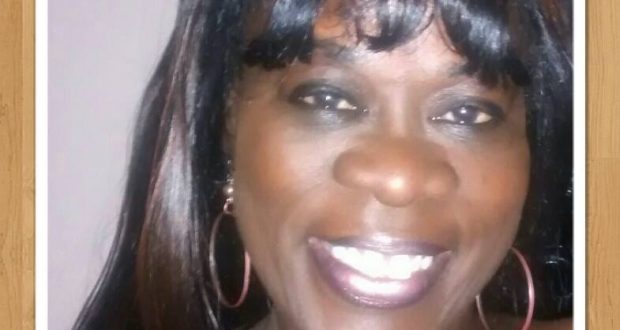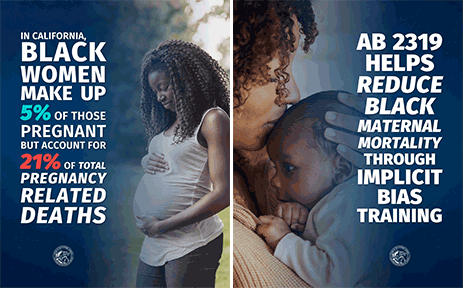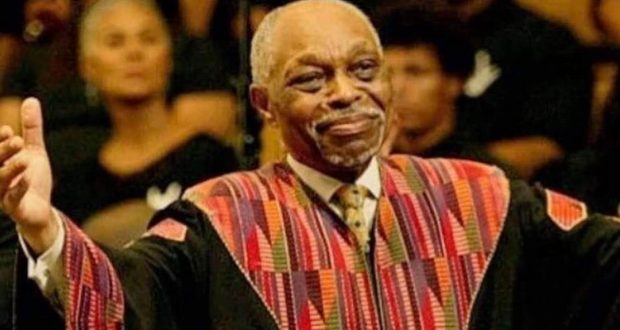Governor Signs Dual Enrollment Legislation
SACRAMENTO, CA— Governor Newsom signed Assemblymember Chris Holden’s legislation, Assembly Bill 30, that ensures dual enrollment opportunities remain available to students.
“With the rising cost of higher education that widens the achievement gap, we need to find more ways to make college more affordable and accessible,” said Assemblymember Chris Holden.
“Dual enrollment is a proven strategy that creates pathways to college and gives opportunities to students who might never have thought it would be possible to go to college.”
Assembly Bill 30 extends the College and Career Access Pathways (CCAP), first established by Assemblymember Holden’s legislation in 2015, past its current expiration at the end of 2021, and ensures dual enrollment opportunities remain available to students who are not already college bound or are underrepresented in higher education. The new legislation also streamlines the process for developing CCAP agreements between community colleges and K-12 districts.
Dual and concurrent enrollment provides high school students access to college-level coursework. In some cases, students earn both high school and college credit for the same course depending on approval from local school and community college governing boards.
“Dual enrollment helps increase the number of college graduates, reduce time and money spent for college, and help close the achievement gap,” said Holden. “Today’s signature is a win for students and their families.”
Assemblymember Holden Joins Governor Gavin Newsom for Wildfire Legislation Bill Signings
(EMPIRE NEWS NETWORK—ENN)— SACRAMENTO, CA— Recently, Assemblymember Chris Holden joined Governor Gavin Newsom’s signing ceremony for legislation aimed at improving California’s wildfire prevention, mitigation and response efforts. As chair of the Assembly Committee on Utilities and Energy, Holden had a significant role in developing a comprehensive legislative package this year to address the threat of wildfires and the resulting impact on communities and ratepayers.
“It’s been a privilege and a great responsibility to work with Governor Newsom and my colleagues in the Legislature to find the right response to the devastating wildfires that have ravaged our state,” said Holden. “Our work is not done yet but we’re in a much better place this year than we were only a year ago.”
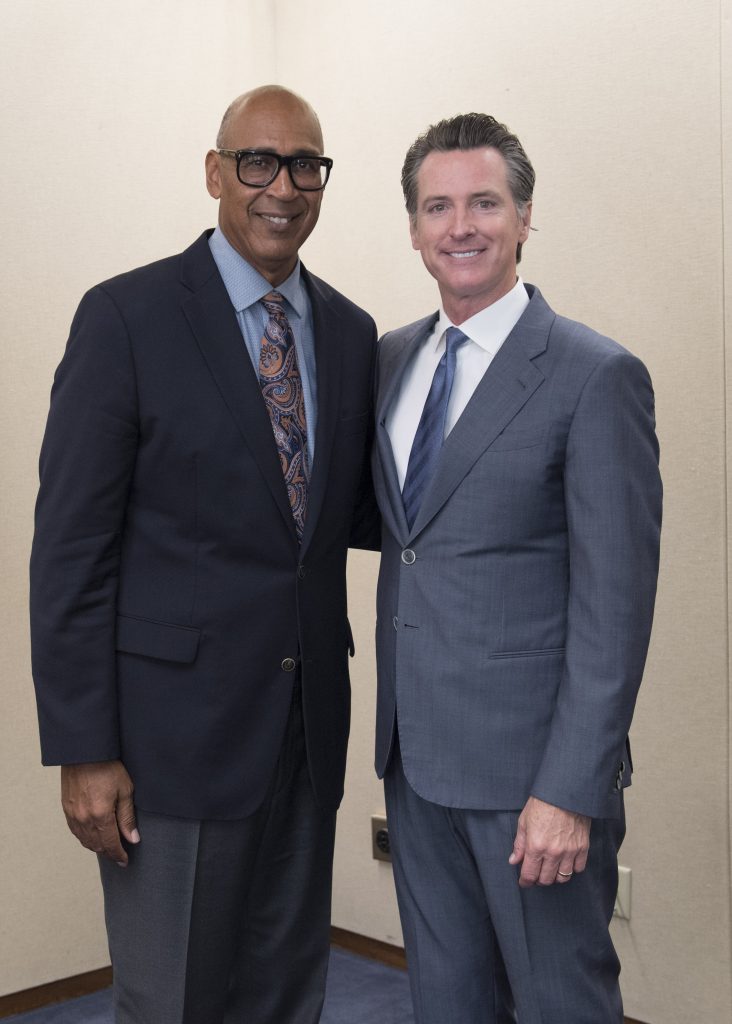
The bills signed by Governor Newsom today included Holden’s Assembly Bill 1513 which refined provisions of legislation signed earlier this year to prevent and respond to fires caused by electric utility infrastructure. The Governor also signed several bills for which Holden played a key role in crafting as Chair of the Assembly Utilities and Energy Committee. The bills will result in the refinement of programs impacting the deenergization of electric lines (Public Safety Power Shutoffs) to prevent ignition of fires during extreme weather events and enhance vegetation management to prevent fire ignition by electric lines. The full list of bills signed by Governor Newsom can be found here.
Climate change has created a new wildfire reality for California. The state’s fire season is now almost year round. More than 25 million acres of California wildlands are classified as under very high or extreme fire threat with approximately 25 percent of the state’s population – 11 million people – living in those high-risk areas. At the same time the state is experiencing an increase in weather patterns with high wind and temperature coupled with low humidity. The events, along with deficiencies in utility vegetation management practices, have caused the ignition of several fires as a result of contact between the electric lines and vegetation.
“Our goal in the last year has remained constant – protect ratepayers and wildfire victims, improve the safety of electric infrastructure, and ensure that we have fiscally stable electric utilities to serve customers,” said Holden.
Holden’s legislation was a follow up bill to Assembly Bill 1054 signed earlier this summer, that increased safety requirements for utilities and protected customers and taxpayers from wholly bearing the costs of devastating wildfires.
Seven Tips to Help Choose Your Health Plan During Open Enrollment
By Rob Falkenberg, CEO, UnitedHealthcare of California
Open enrollment season is here, a time when more than 18.3 million people in California and millions of Americans across the country will have the opportunity to select or switch their health insurance plan for 2020.
To help guide you during this important time, here are some tips that may help lead you to better health and cost savings.
Tip 1: Know your open enrollment dates
- For the more than 178 million Americans with employer-provided coverage, many employers set aside a two-week period between September and December when employees can select health benefits for the following year.
- For the more than 64 million people enrolled in Medicare, Medicare Annual Enrollment runs from Oct. 15 to Dec. 7 each year.
For most people, changes made during this time will take effect Jan. 1, 2020.
Tip 2: Understand your options. When it comes to selecting a plan, one size does not fit all. Take the time to understand your options so you can find what will work best for you. A good first step is to make sure you understand health insurance lingo, such as premium, deductible, coinsurance and out-of-pocket maximum. If you need a refresher, check out UnitedHealth Group’s Just Plain Clear Glossary (in English, Spanish and Portuguese) to learn and understand health care terms. And if you’re eligible for Medicare, make sure you’re familiar with the difference between Original Medicare and Medicare Advantage as you weigh your options.
Tip 3: Anticipate next year’s health expenses. When reviewing your options, plan ahead. Maybe you are expecting a significant health event next year, such as a surgery or having a baby. If so, then it’s even more important to compare the “total cost” of your plan, not just your monthly premium. Plan designs vary, so also compare deductibles and out-of-pocket maximums.
Tip 4: Check to make sure your medications are covered
Even if you don’t expect to change plans, it’s important to make sure your prescription drugs will still be covered next year. Costs can change from year to year, and how much you pay for generics vs. brands may differ among health plans.
Tip 5: Ask about well-being programs. Many health plans now offer financial incentives that reward you for taking healthier actions, such as completing a health survey, walking, going to the gym or not using nicotine. Also, many Medicare Advantage plans offer gym memberships and wellness programs for members at no additional costs.
Tip 6: Don’t forget about specialty benefits
Additional benefits, such as dental, vision, hearing, disability or critical illness insurance, are often cost-effective coverage options that can help protect you and your family from head to toe. For Medicare beneficiaries, some may be surprised that Original Medicare doesn’t cover prescription drugs and most dental, vision and hearing services, but many Medicare Advantage plans do.
Tip 7: Try the convenience of virtual visits. If you are busy juggling kids’ schedules or work travel, or simply prefer to connect with a doctor from the comfort of your own home, consider choosing a plan that includes 24/7 virtual visits. It may be a convenient, lower-cost way to talk to a doctor about minor health issues, and all you need is a smartphone, tablet or computer. Often, telehealth is available to members of employer-sponsored, individual and Medicare Advantage plans.
For more helpful articles and videos about open enrollment and health care, visit UHCOpenEnrollment.com.
Fourth Annual Head Wraps in the Park Festival Presented by Red Bay Coffee
A celebration of global culture and community
(EMPIRE NEWS NETWORK—ENN)— LOS ANGELES, CA—- On September 28, 2019 from 11am to 6pm nearly four thousand women congregated at Grand Park in Downtown, Los Angeles for the fourth annual Head Wraps in the Park Festival made possible by Red Bay Coffee Roasters. The event is a celebration of culture and the brainchild of Fatima Dodson, a local business owner in Los Angeles. The concept for the festival originated from the desire and need to create a safe space for women of all ethnicities to celebrate wearing head wraps. Head wraps, also known as “goddess wraps”, are a garment of choice associated with the natural hair movement in the African-American community. Goddess head wrapping is a global tradition ranging from South Asia to Africa. It is an art form that bridges cultures and also wonderfully displays creativity in textile arts & crafts. Originating in Sub-Saharan Africa, head wraps are an African beauty statement. Worn on the head and symbolizing a crown, the head wrap either covers hair completely or ties as a headband around the forehead to reveal the hair. There are many ways that someone can tie a head wrap, making it versatile enough to fit most personal styles.
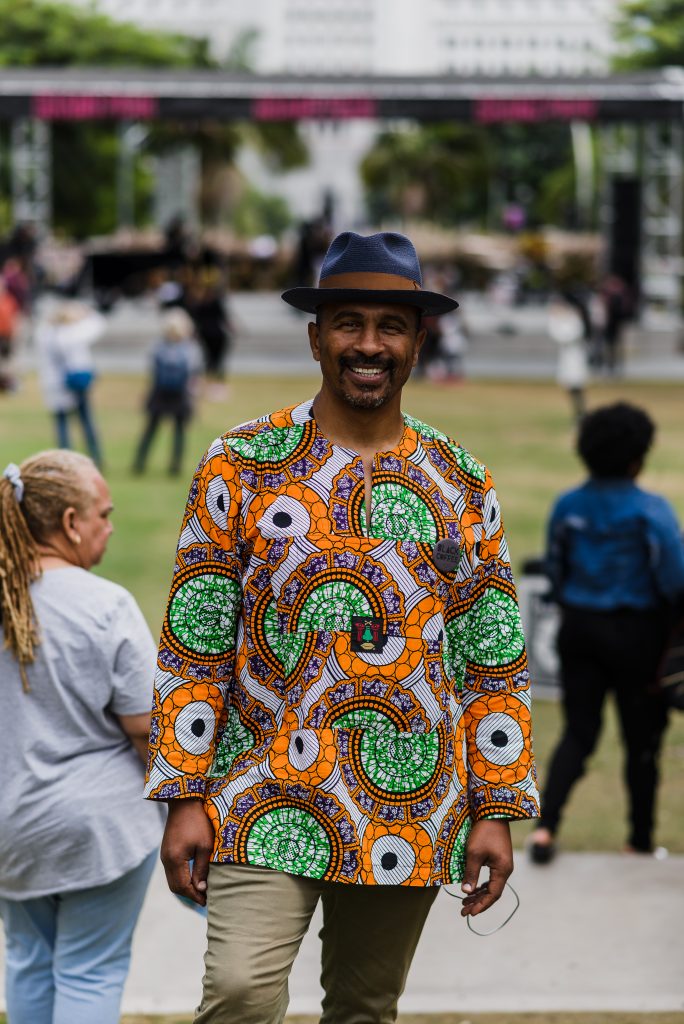
Photo Credit: B W Banks 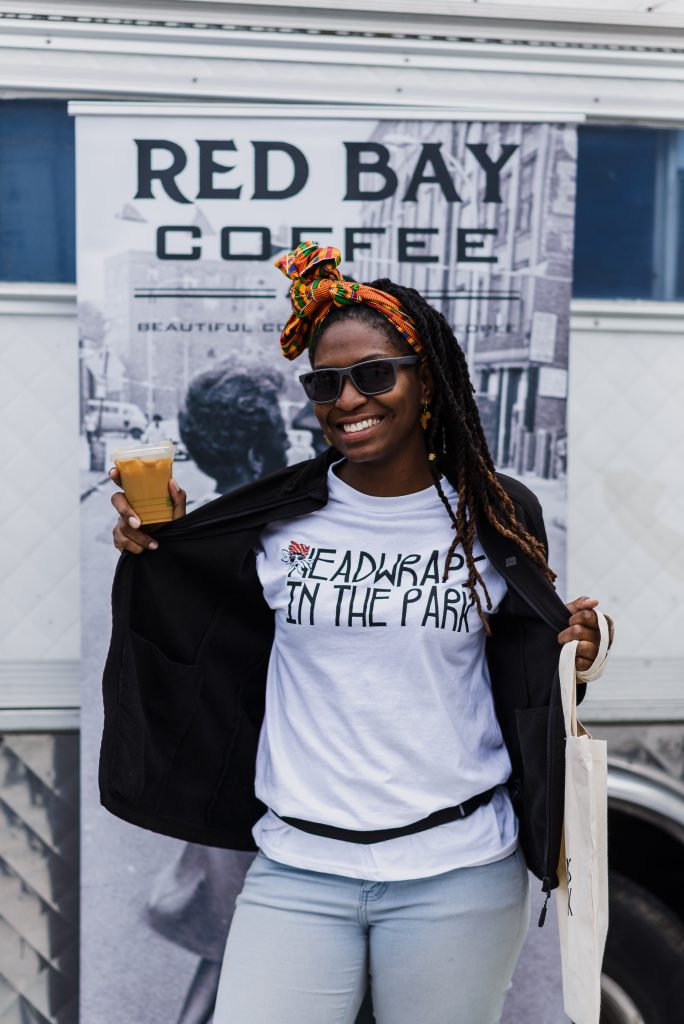
Photo Credit: B W Banks 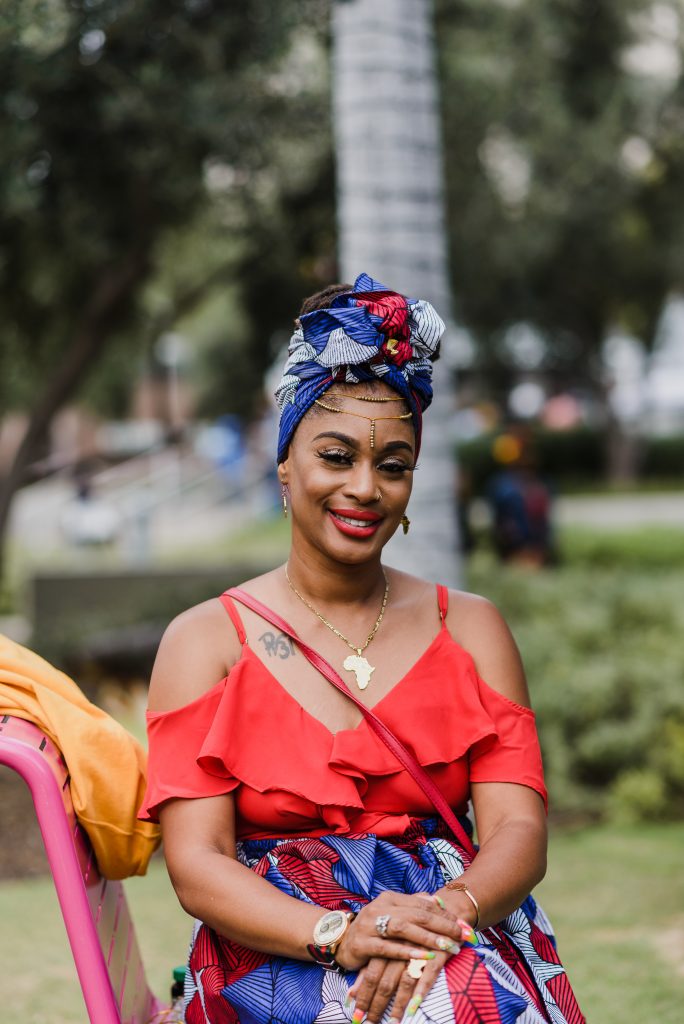
Photo Credit: B W Banks
The annual event draws women from around the world. “The event is appreciated by the community and provides the opportunity to celebrate African culture and beauty,” says Fatima Dodson.
Red Bay Coffee, the black-owned sustainable specialty coffee company with headquarters in Oakland, California, is a proud sponsor of the Head Wraps in the Park festival. Since its founding in 2014, Red Bay has been at the forefront of the fourth wave of coffee—a firm commitment to ensure coffee production is not only high quality and sustainable, but also a vehicle for social unity and economic empowerment. Red Bay Coffee’s Public Roasteries serve as hubs for building community and bringing Beautiful Coffee to the People.
“People are in need of a sense of courage and positivity. When Fatima invited us to support Head Wraps In The Park, we were happy to help. We source our coffee beans directly from countries such as Ethiopia, Tanzania, Kenya, Mexico, and Colombia–all with a rich history of creativity and expression. Celebrating culture truly resonates with us,” says Keba Konte Founder and CEO at Red Bay Coffee.
The arts and culture festival will included experiences for all ages. Event highlights included panel discussions, heading wrapping bars, live DJ, food and beverage trucks, photo and art exhibits and so much more. Red Bay Coffee and Head Wraps in the Park also supported a social media head wrap contest with cash prizes given to winners. A special moment was captured when attendees gathered and organized for a photos in the shape of the continent of Africa.
ABOUT RED BAY COFFEE ROASTERS
Since 2014 Red Bay Coffee Roasters has been building a global community through a commitment to bringing Beautiful Coffee to the People and ensuring economic opportunity with a team that values diversity and inclusion. Red Bay Coffee envisions a world in which specialty coffee is a vehicle for social restoration and environmental sustainability. Red Bay Coffee’s commitment to producing the best and most beautiful coffee starts by building and maintaining real relationships with the farmers and cooperatives that harvest, process, and prepare some of the best green coffee in the world. Red Bay Coffee believes in fair relations and prides itself on creating value streams that emphasize experience and ethics, not just supply and demand.
In 2016, Red Bay Coffee established its first public roastery and production headquarters in the Fruitvale District of Oakland, California. Since then, Red Bay Coffee continues to spread its footprint throughout the United States through several locations and directly to customer’s doorsteps nationwide. Red Bay Coffee Roasters was founded by Keba Konte, a renowned local artist and successful food entrepreneur with deep roots in the San Francisco Bay area’s specialty coffee and hospitality industry. Konte continues to foster his vision of using Red Bay Coffee as a platform to create a culture of equity, where all people are celebrated, in addition to bringing greater opportunities for those historically marginalized and/or left out of the specialty coffee industry, particularly people of color, the formerly incarcerated, women and people with disabilities. www.redbaycoffee.com
Assemblymember Holden’s College Athlete Civil Rights Act Signed By Governor
(EMPIRE NEWS NETWORK—ENN)— SACRAMENTO, CA—- Today, Assemblymember Holden’s College Athlete Civil Rights Act of 2019 was signed into law. The legislation, Assembly Bill 1573, gives college athletes more tools and protection to address the challenges or abuses they may face on campus. The bill also allows colleges to create a degree completion fund.
“Many college athletes are putting everything on the line and risking their bodies, and for some, one injury away from losing everything. Others are at risk of losing it all for speaking out for their team or any abuses they are experiencing as college coaches have the power to keep you on or off the team,” said Assemblymember Chris Holden. “This bill is personal for me – before I started my journey in public service, I played college basketball for San Diego State University.”
Abuses and unfair policies against college athletes have made headlines and raised questions about the way college sports programs are run. Assembly Bill 1573 requires schools to inform students of their rights with documentation and public signage and prohibits retaliation by schools if a student reports violations of abuse or violation of rights.
“In addition to providing protection, laying out a path for universities to create a degree completion is a big step towards creating an equitable system for college athletes,” said Holden. “I hope to see universities across California establish degree completion funds in the near future – whether to help students complete their academic program should they lose their eligibility, or to provide a savings account to collect money earned through sponsorships that would be available upon graduation.”
African American Spending Path Demands Marketers Show More Love, Support of Culture
Nielsen’s Latest Report Reveals How Technology and Culture Drive Black Buying
African Americans want more for themselves and from corporate America, and they express it with their dollars as they move through the consumer journey, from brand awareness to purchase, as revealed today in Nielsen’s 2019 Diverse Intelligence Series (DIS) Report on African Americans.
It’s in the Bag: Black Consumers’ Path to Purchase explores the non-linear and uniquely technologically driven road that African Americans follow to make purchasing decisions, which ultimately maximizes both online and in-person shopping options. This path highlights several differences in shopping behavior and purchasing when compared to the total U.S. population. The report also includes deeper insights into how culture, socio-economics and business influences how, why and what motivates African American spending in a special co-authored section by advocate and media commentator Angela Rye, CEO and Principal of Impact Strategies.
“At 47.8 million strong and a buying power that’s on par with many countries’ gross domestic products, African Americans continue to outpace spending nationally,” said Cheryl Grace, Nielsen’s Senior Vice President of Community Alliances and Consumer Engagement and co-creator of the DIS Report. “This year, we wanted to help brands and marketers understand the multi-faceted process that Blacks take to buy the products they buy. There are several drivers, but culture is at the center of them all. Further, with their love for technology, they are much more savvy and conscious consumers. They are as we say, ‘woke.’ They pay attention to how companies are speaking to them. As they spend more, they want more for themselves and from the brands they support.”
Dating back to 2011, this is Nielsen’s ninth report highlighting the media consumption, purchasing habits, lifestyle interests and economic advancements of African Americans. It is the third in a theme, released by Nielsen this year following the comprehensive purchasing processes of Asian American and Latinx consumers. Key takeaways from It’s in the Bag: Black Consumers Path to Purchase include:
African Americans are welcoming recipients of advertising across all channels. However, while the trends of the Black buying power and over-indexing in spending continue to increase, companies’ investments to advertise to them have decreased.
- African Americans are more likely than the total population to agree that advertising provides meaningful information on most platforms, including mobile (42% higher), television (23% higher), radio (21% higher) and the internet (18% higher).
- Advertising spend designed to reach Black consumers declined 5% between 2017 and 2018.
Physical appearance reflects a sense of cultural pride and self-expression in the Black community. This is evidenced by the top spending priorities for African Americans from everyday soap to luxury handbags.
- African Americans outspend the total market on personal soap and bath needs by nearly 19% ($573.6 million).
- Men are making an impact with grooming habits, outpacing the total market by 20% on toiletry items.
- Blacks are 20% more likely than the total population to say they will “pay extra for a product that is consistent with the image I want to convey.”
- They are also more likely to say they shop at high-end stores including Saks Fifth Avenue (63%), Neiman Marcus (45%) and Bloomingdales (24%).
While online shopping grows, African Americans continue to head to physical stores for the personal touch and feel experience—but with more discerning eyes.
- More than half (52%) of African Americans find in-store shopping relaxing, compared with 26% of the total population.
- 55% of Black consumers say they enjoy wandering the store looking for new, interesting products.
- When shopping, African Americans are more influenced than the total population by store staff (34% more likely), in-store advertising (28% more likely) and merchandising (27% more likely).
The “for us by us” trend of Black-owned brands is profoundly impacting the African American path to purchase and consumer marketplace. Black consumers support brands that align with their lifestyles and values.
- African Americans dominate the ethnic hair and beauty aids category, accounting for almost 90% of the overall spend.
- 42% of Black adults expect brands they purchase to support social causes (16% higher than the total population).
- 35% of African American shoppers are more likely to agree, “when a celebrity designs a product, I am more likely to buy it.”
- Procter & Gamble (P&G) is the largest advertiser in African American media, spending more than a half-billion dollars ($544.3 million). Five of the top 20 baby care category products come from P&G’s Pampers and Luvs brands.
Soul food drives African American consumers’ top grocery purchases. These consumers are also passionate about the environment, wanting to buy safe, locally sourced food items.
- African Americans outpace the general market on: Quaker grits ($19 million); Louisiana Fish Fry ($11 million); Glory Greens (frozen and fresh, $9.5 million combined) and Jay’s Potato Chips (nearly $2.7 million).
- 61% say produce is the most important category to buy local, followed by bakery and prepared foods (56%), eggs (55%) and dairy (52%).
- Blacks over-index the total population concerned about food safety issues: antibiotic use in animal production (by 20%); artificial ingredients (by 19%) and GMO crop development due to climate change. The biggest worry is rising prices due to trade tariffs (68% Blacks vs. 56% total population).
“Nielsen continues to unearth undeniable data and insights that highlight both the agency and power of Black consumers, and the plethora of opportunities that exist for companies that are focused on nurturing and empowering how they move through the world,” said Jonathan Jackson, former 2019 Nieman-Berkman Klein Fellow in Journalism Innovation at The Nieman Foundation for Journalism and member of Nielsen’s African American External Advisory Council.
Nielsen uses U.S. Census data to determine population estimates that inform its U.S. panels and its understanding of consumer behavior. Given the rapid diversification of the U.S. population, an accurate census has never been more important. That’s why Nielsen has signed on as a 2020 Census Official Partner with the U.S. Census Bureau and utilized census data to show the economic and demographic impact of African American consumers. This is the second time the company has leveraged this partnership for the Diverse Intelligence Series, after the 2019 Latinx consumer report, released in August.
For more data and insights, download It’s In the Bag: Black Consumers Path to Purchase at Nielsen’s African American community site. Nielsen invites consumers to weigh in on the discussion using the hashtag #TruthBeTold on social media. Follow Nielsen on Facebook (NielsenCommunity) and Twitter (@NielsenKnows).
“God Wants to Bless You, but You So Stuck on Stupid Trying to Hold on to What You Have, You Can’t See the Forrest for the Trees LET IT GO…NOW!”
By Lou Yeboah
For thus saith the Lord, “My hands have made both heaven and earth; they and everything in them are mine. LET IT GO – NOW! “See I am doing a new thing! Now it springs up; do you not perceive it? I am making a way in the wilderness and streams in the wasteland” [Isaiah 43:19]. “For I am the LORD your God, the one who takes hold of your right hand, who says to you, ‘Don’t be afraid, I am helping you.” [Isaiah 41:13]. LET IT GO – NOW!
I tell you, the joy of leaving everything in the Lord’s hands is seeing the Lord’s hand in everything. Listen, God will never take something away from you without the intention of replacing it with something much better! The crucial thing for us to remember is that all that God does for us as his children is for our good. He is blessed in both the giving and the taking away because both are for the sake of our joy. [Ephesians 3:20] tells us that He wants to do abundantly above and beyond ALL that we could ever ask or think. And if we trust Him enough to take Him at His Word, we will find ourselves on a journey toward the fulfillment of whatever we need. Therefore, humble yourself and seek to understand what the Lord is doing around you. For God has written a destiny over your lilfe, and if you trust Him enough to take Him at His Word, you will find yourself on a journey toward the fulfillment of that destiny. Take your hands off the wheel and let God have His way in your life. LET IT GO! Total surrender everything to Him. For now is the time to release all control of your destination over to Jesus -whether you understand or not. Because as long as you hold on and try making sense of everything and of where He is leading you His will can’t prevail. LET IT GO – NOW!
You see, when you finally put your complete trust in Him -blinded by faith- Jesus will bring you beyond the troublesome and cumbersome same old same old and thrust you into a bright new place. So close your eyes and release it all into the hands of God. Get out of the driver’s seat and stop trying to find your own way. Stop trying to understand the path that He’s taking you. He will restore what has been lost. He will resurrect what has died. He will give beauty for ashes. Just give up and let Him take over. LET IT GO – NOW! And let Jesus take the wheel.
“In all your ways submit to Him, and He will make your paths straight. [Proverbs 3:6]
You Don’t Have a Demon – You Need Help!
“We need to take the stigma away from mental health issues in the Black family.”
There is a tradition in Black families that says mental health problems are really a “demon” inside the person and all you need is prayer to get better. “You don’t have demon, you need help,” says Cathedral of Praise International Ministries, Bishop Craig W. Johnson last Sunday as he introduced mental health day with the Broken Crayons Still Color Project created by the Healthy Heritage Movement.
Bishop Johnson’s comments introduced one of the nation’s leading clinical psychologists Dr. Gloria Morrow and the Broken Crayons Still Color Project to the Cathedral of Praise congregation in two services discussing the need for professional mental health in the Black Community.
Broken Crayons Still Color Project is an eight-week program created and presented by the non-profit Healthy Heritage Movement at churches in Riverside and San Bernardino Counties. It is taught by Dr. Gloria Morrow and Dr. Candance Walters.
“This program is designed for African American women to learn effective strategies to cope with and identify signs of depression, stress, anxiety, PTSD, substance abuse, and other mental strains,” said Dr. Morrow.
“Broken Crayons Still Color Project is important to implement in the faith community because churches are one of the central institutions for African Americans; and when they are able to integrate spirituality with some of the psychological concepts that are important for them to learn, it really makes a difference,” said Dr. Morrow.
“Our Mission is to decrease health disparities and increase health equity in the African American Community”, said Healthy Heritage Movement founder Phyllis Clark.
“Some people in church don’t just need prayer, they need a pill, or they need therapy, or pastoral guidance. We do our best to distinguish between them,” said Bishop Johnson. “We need to take the stigma away from mental health issues in the Black family.”
Bishop Johnson understands the need for mental health support. Before becoming a pastor, he served as a Peer Group Counselor, Probation Group Counselor, Employment Services Counselor, Social Service Worker, Independent Living Skills Program Coordinator, Service Program Specialist, and Social Services Supervisor.
For a list of Black mental health professionals in the Inland Empire, for a class near you or more information visit BrokenCrayons.org or call (951) 682-1717 or email: pyclark@healthyheritage.org
The Broken Crayons Still Color Project is made possible by the California Reducing Disparities Project – Office of Health Equity.
About Healthy Heritage
Healthy Heritage Movement, Inc. was founded in 2007 by Phyllis Y. Clark in Southern California. Created to target and address health disparities within the African American community, Healthy Heritage Movement focuses on the wellbeing of African Americans through health education, policy change, and community outreach. For more information on Healthy Heritage go to: www.HealthyHeratige.org.
About Bishop Johnson
Bishop Johnson is a graduate of California Baptist University with a BA in Religion and a BA in Behavioral Science, he studied Social Work and Public Administration at Cal State San Bernardino and a Doctor of Theology from Pentecostal Bible College. For more information on Cathedral of Praise church and Bishop Johnson go to: http://copim.org
About Dr. Gloria Morrow
Dr. Morrow has a PhD in Clinical Psychology from Fielding Graduate University, Santa Barbara, a Master of Science degree in Marriage and Family Therapy from Azusa Pacific University, and a BS degree in Psychology from the University of La Verne. For more information on Dr. Morrow go to: http://www.gloriamorrow.com/bio.html
California Charter Stories Bring Hard Data, First-Hand Experience to National School Choice Debate in D.C. at Congressional Black Caucus
By Tanu Henry| California Black Media
North Carolina passed a law prohibiting Black slaves from reading and writing during the state’s 1830-31 legislative session.
The law read in part, “That any free person, who shall hereafter teach, or attempt to teach, any slave within the State to read or write, … or shall give or sell to such slave or slaves any books or pamphlets, shall be liable to indictment in any court of record in this State…not exceeding thirty nine lashes, nor less than twenty lashes.”
When the emancipation proclamation freed African-American slaves some 32 years later, slave-holding states like North Carolina did not automatically throw out the harsh anti-literacy legislation they had been using to oppress slaves. Those laws, the Jim Crow ones that followed, segregated schools, under-funded school districts – as well as other economic, political and social factors – all played a role in erecting barriers to a quality education for African Americans over the decades that followed.
Now almost 150 years later, Black students, especially African-American boys, are failing in the American education system at alarming rates. Social scholars are saying it’s an epidemic in need of a remedy now.
“Since we entered this country, there has been a system in place with the explicit expectation that our humanity will be robbed from us,” said Steve Perry, an African-American educator, school choice advocate and head of Capital Preparatory Schools in Connecticut and New York.
Perry was participating in a panel discussion on charter schools and school choice that took place during the Congressional Black Caucus Foundation Annual Legislative Conference, held in Washington, D.C., September 11-15 at the Walter E. Washington Convention Center.
Journalist Roland Martin leads a traveling town hall called “School Choice is the Black Choice.” This month, he brought the town hall to the Black caucus convention with a panel of educators. On stage, Perry joined Elizabeth Davis, president of the Washington Teachers Union; Shawn Hardnett, founder and executive director of Statesman Preparatory Academy for Boys in Washington, D.C.; and Margaret Fortune, President and CEO of Fortune School, a network of California charter schools based in Sacramento.
More than 100 guests showed up for the talk focused on discussing ways to improve African American educational outcomes.
“To keep Black children in a failing school system is absurd, and should be illegal,” said Fortune, who shared personal accounts with the audience about her experience going through the authorization process to open a charter school and running her system of K-12 college prep schools.
She also recounted highlights of her grueling fight this year against three bills in California – supported by the NAACP – that would have restricted the operations and growth of the taxpayer-funded independent schools in her state. Most of them operate in poor minority communities.
“I challenge Black education leaders to come together for the benefit of Black children,” urged Fortune, who also shared data with the audience about the progress her school has made since first opening in 1989.
She said students at Fortune schools in Sacramento – mostly poor, Black and Latino – are excelling above state averages. Three of them are among the top 10 achieving schools in all of California
“In my flagship school,” she said,”66 percent are reading and doing math at grade level.”
Across the United States, African-American students are performing at 24 percentage points below their White counterparts in math. In English and language arts, they are trailing White students by almost 30 percentage points.
In California, 68 percent of all African American students perform below their grade level in English and language arts. In math, about 80 percent of Black students fail to meet the state’s proficiency mark.
According to an EdSource report, only 73 percent of African-American high school seniors in California earned a diploma in 2017, compared to 93 percent of Asian students, 81 percent of Hispanics and 87 percent of White students.
The only sub-group Black public school students outperform in California is students with disabilities.
Many teachers unions across the country, including the National Education Association (NEA) and the California Teacher’s Association (CTA), say they are concerned about dwindling financial resources to provide a quality education to all students. They say charter schools siphon away the limited funding for public education that governments allot to school districts, especially in low-income neighborhoods across the United States.
“I was a supporter of charters,” said Davis. “We’ve had some bad public charter and (non-charter) public schools and they should be closed if they aren’t up to speed, but I’ve noticed there is a pattern of systematically starving public schools in certain parts of the city.”
Davis argued that charter public schools, particularly in Washington, D.C., where she is based, need more oversight as well; that they need to be more transparent about how they spend taxpayer dollars.
The group agreed that it is a mistake to look at the charter-school-verses-traditional-public-school debate as a national issue because education policy is decided at the state, county or municipal level.
“Education in America is a local issue,” said Martin. “You have different rules in different states.”
In California, Gov. Newsom signed SB 126 into law in March. The legislation, introduced by Sen. Connie Leyva (D-Chino) and Patrick O’Donnell (D-Long Beach), holds the more-than 1,300 charter schools in the state to the same rules around open meetings, public records and conflict of interests that govern traditional public schools.
During the back-and-forth, several of the school choice advocates on the panel pointed out that the national conversations that relate adequate funding to student performance are misleading. That thinking, they argued, leads charter school educators to believe that their traditional public school peers are only concerned about their salaries, pensions and contracts – rather than the academic achievement of the children they educate.
Assembly Bill 1505 in California initially required authorizers to evaluate the financial impact a charter school would have on a school district in order for its license to be renewed. For many charter school proponents in California, they won a victory by convincing the author of the bill to add academic performance as a factor.
Gov Newsom is expected to sign the bill into law.
Davis, the only educator on the panel defending traditional public schools, was outgunned 3-1 by the other panelists and Martin, who was the moderator. Martin admitted he uses his voice and platform to “elevate the issue” of school choice and spell out to African Americans around the country how it benefits poor Black children and create job opportunities in their neighborhoods.
Fortune chimed in, too.
“I don’t want to have to apologize for the fact that I’m starting schools to close the Black achievement gap. I do that without apology,” she said.
View the entire panel discussion here:
 Westside Story Newspaper – Online The News of The Empire – Sharing the Quest for Excellence
Westside Story Newspaper – Online The News of The Empire – Sharing the Quest for Excellence
